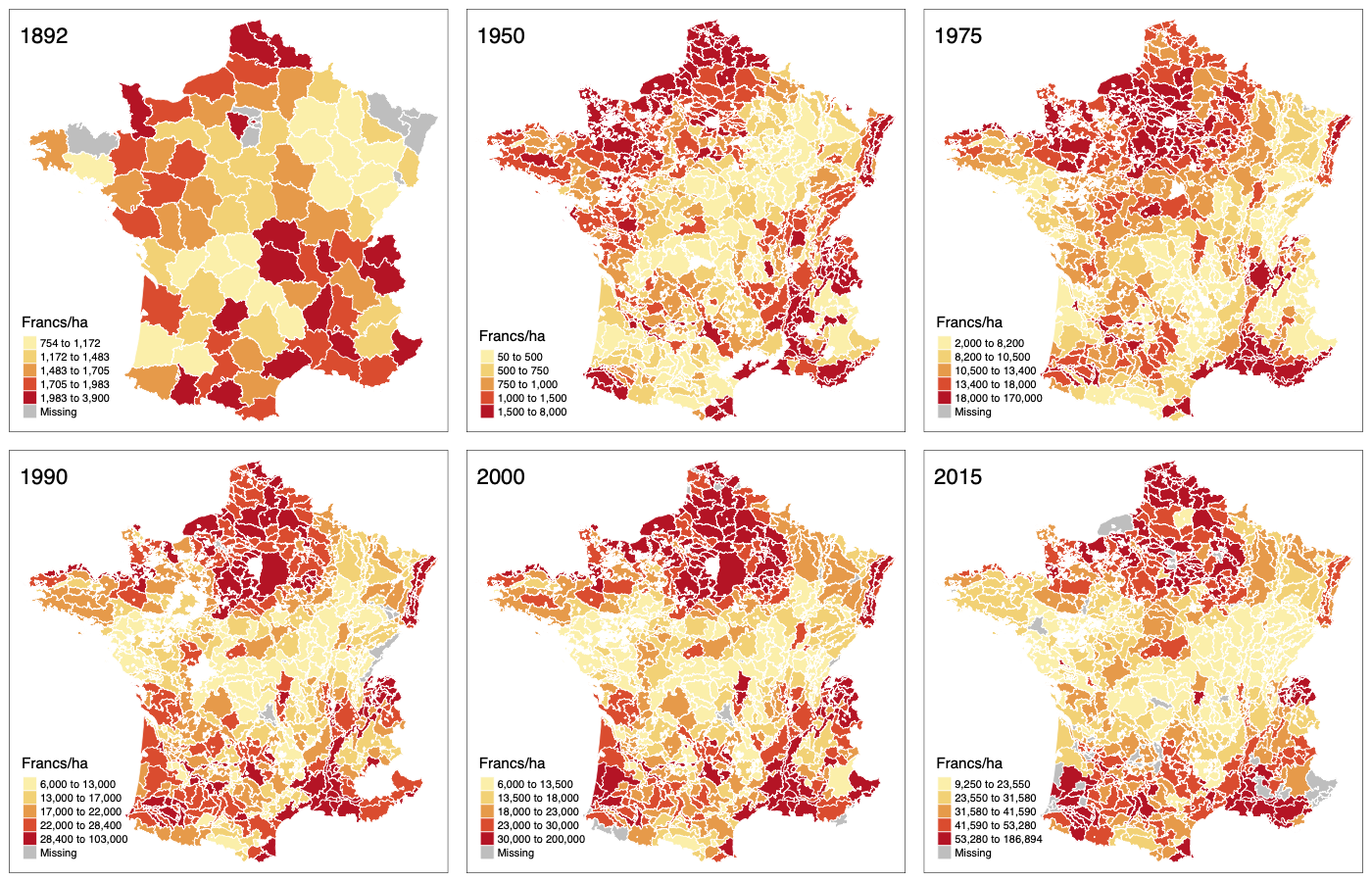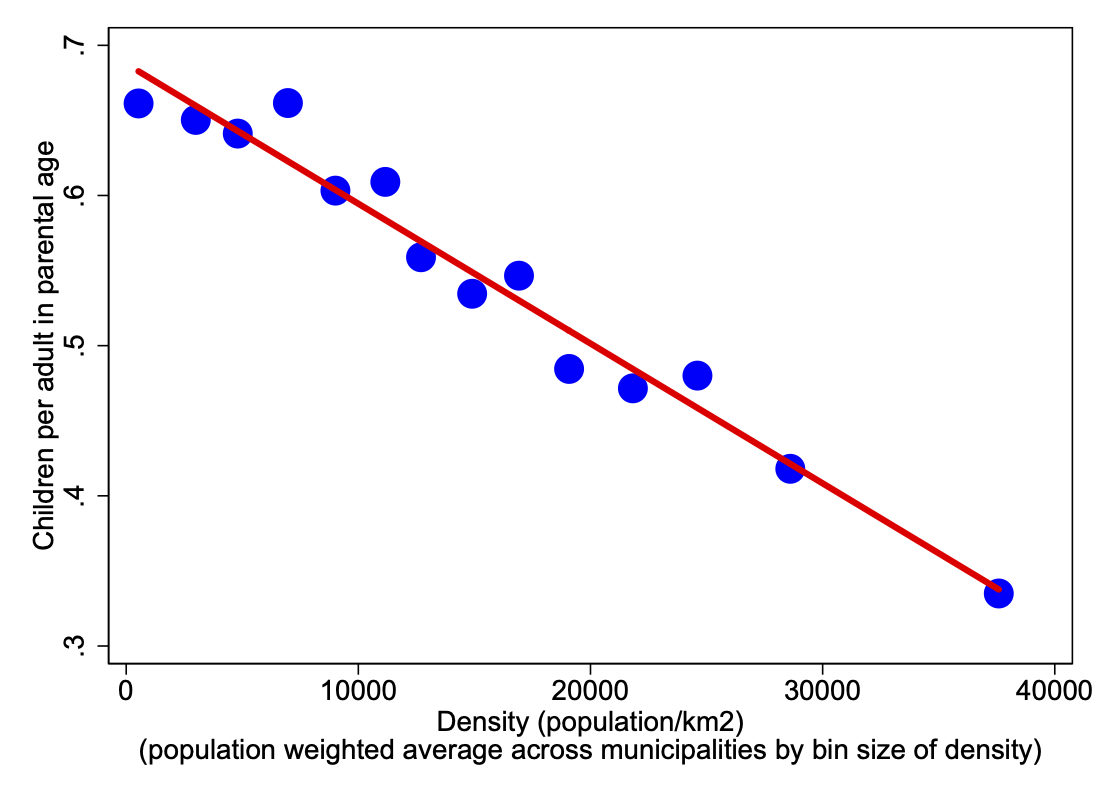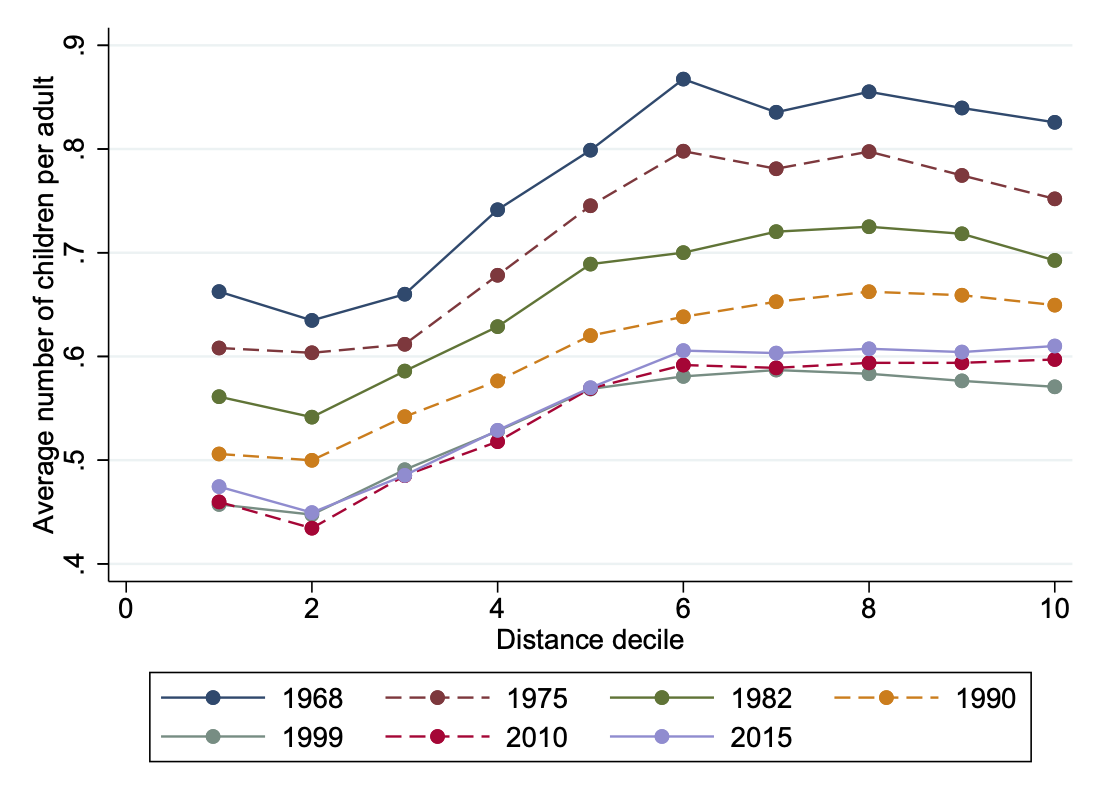Habilitation à diriger des recherches
en sciences économiques
SciencesPo Paris
24 March, 2023
Agenda: Efficiency of Urban Environments
- Economic Efficiency: Agglomeration, Growth and Size of Cities.
- Environmental Efficiency: Urban Sprawl and Footprint.
Some Questions
- Who lives (or moves) where, and what’s the role of Housing?
- How does City Growth occur in the long run?
- How are Fertility and City Growth connected?
- Which policy mix will achieve net-zero emissions and keep inequality at bay?
Published Research for HDR
👉 Who lives (or moves) where, and what’s the role of Housing?
Labor Market Mobility and Homeownership1
- Regional Migration rates are low 👉 unimportant?
- Heterogeneous Migration Elasticities and, hence, insurance.
- Selection on unobservable types.
- Estimate consumption value of shutting down migration.
Selection of Houses into Owned vs Rented1
Questions
- Which characteristics of a house matter for selection into rented or owned sector?
- Conditional on selection, how are those characteristics priced?
- Importance for homeownership theories?
Findings
- High-value houses (\(m^2\) or detached) more likely owned, and have a higher rent/price ratio.
- Rent/Price ratio varies greatly with location, \(\Pr(own)\) does not.
- Modeling and measuring unobserved quality is key for selection.
Mortgage Default and Lending Behaviour1
- Nevada decided in 2009 to abolish Recourse Loans.
- Conduct an event-study on loan-level data. Control: Refinance loans (unaffected by change in law)
- Approval rates declined by about 3%, loan sizes by 1-2%.
- Placebo in counties outside Nevada’s border confirm results.
Contributions and Findings
- First paper to use within-state variation in recourse.
- We corroborate existing evidence: Default-friendly states have reduced mortgage supply.
- We cannot say anything about welfare: maybe now insurance is greater for borrowers?
- 👉 Follow up with Meghir and Li
Ongoing Work
👉 2. How does City Growth occur in the long run?
👉 3. How are Fertility and City Growth connected?
👉 4. Which policy mix will achieve net-zero emissions and keep inequality at bay?
Land Use, Structural Change and Urban Expansion
joint with Nicolas Cœurdacier and Marc Teignier-Baque
Land Use, Structural Change and Urban Expansion
Facts for France 1840-2020:
- Structural Change: Agricultural Employment and Land ⬇️, spending on food ⬇️, housing ⬆️, urban good ⬆️
- The share of agricultural land in GDP goes from 400% to 10%.
- House prices do not rise until the 1960s.
- Urban Density falls 8-fold.
Model
- Spatial GE Model with 3 sectors and endogenous land use.
- Farmland prices (opportunity cost of city expansion) fall, and people spend more on housing
👉 Density Falls.
- Commuting costs also fall! But implications for urban density are different.
Land Use, Structural Change, Urban Expansion
If this mechanism has any bite, we want to see the cross sectional implications.
Extend model to K regions
- Each with separate rural and urban productivity parameter.
- Aggregation consistent with productivity data.
- Urban Population Distribution (i.e. the census) identifies urban productivity distribution.
- Agricultural Land Value Distribution identifies rural productivity distribution.
- Agricultural Land Value Distribution? 🤔
Novel Data: PRA-level prices

Using Novel Data to Evaluate The Model
\[\log{\text{density}_{k,t}} = a_t + b \log \rho_{k,t} + c Z_{k,t} + u_{k,t}\]

- Model extremely close to data in OLS regression of urban density on rural price.
- For a subsample we can instrument price with wheat yields, same results.
Fertility, Housing Costs and City Growth
joint with Nicolas Cœurdacier, Pierre-Philippe Combes and Laurent Gobillon
Fertility, Housing Costs: The Story
- Housing Space is scarse in dense locations.
- Children are costly in terms of housing space:
- Spatial Sorting.
- Endogenous Fertility.
- Negative density-dependence of Fertility.

Fertility and Housing Costs: Contribution 1
- Document 5 stylized facts using Census Data.


Fertility and Housing Costs: Contribution 2
- Develop a quantitative spatial life-cycle model with endogenous fertility and demographics.
- Sorting patterns across demographics
- Fertility dynamics across time and space
- Housing market: Automatic Stabilizer.

Fiscal Policy for Climate Change
joint with François Le Grand, Xavier Ragot and Aurelién Saussay
Fiscal Policy for Climate Change
Climate Inequality
- Cannot achieve first best solution, a Pigouvian Tax.
- (Constrained by Politics.)
- Inequality is key:
- Damages are unequal
- Policies affect people unequally
- We analyse the distributional consequences in this setting.
Contribution
- Heterogeneous-agent framework with environmental externality.
- Carbon intensity in entire economy: Energy, Final Goods, and Consumers.
- Abatement Technologies.
- Our Question: How to balance carbon taxes and subsidies to achieve net-zero by 2050?
Fin
Thanks for listening!

HDR Florian Oswald